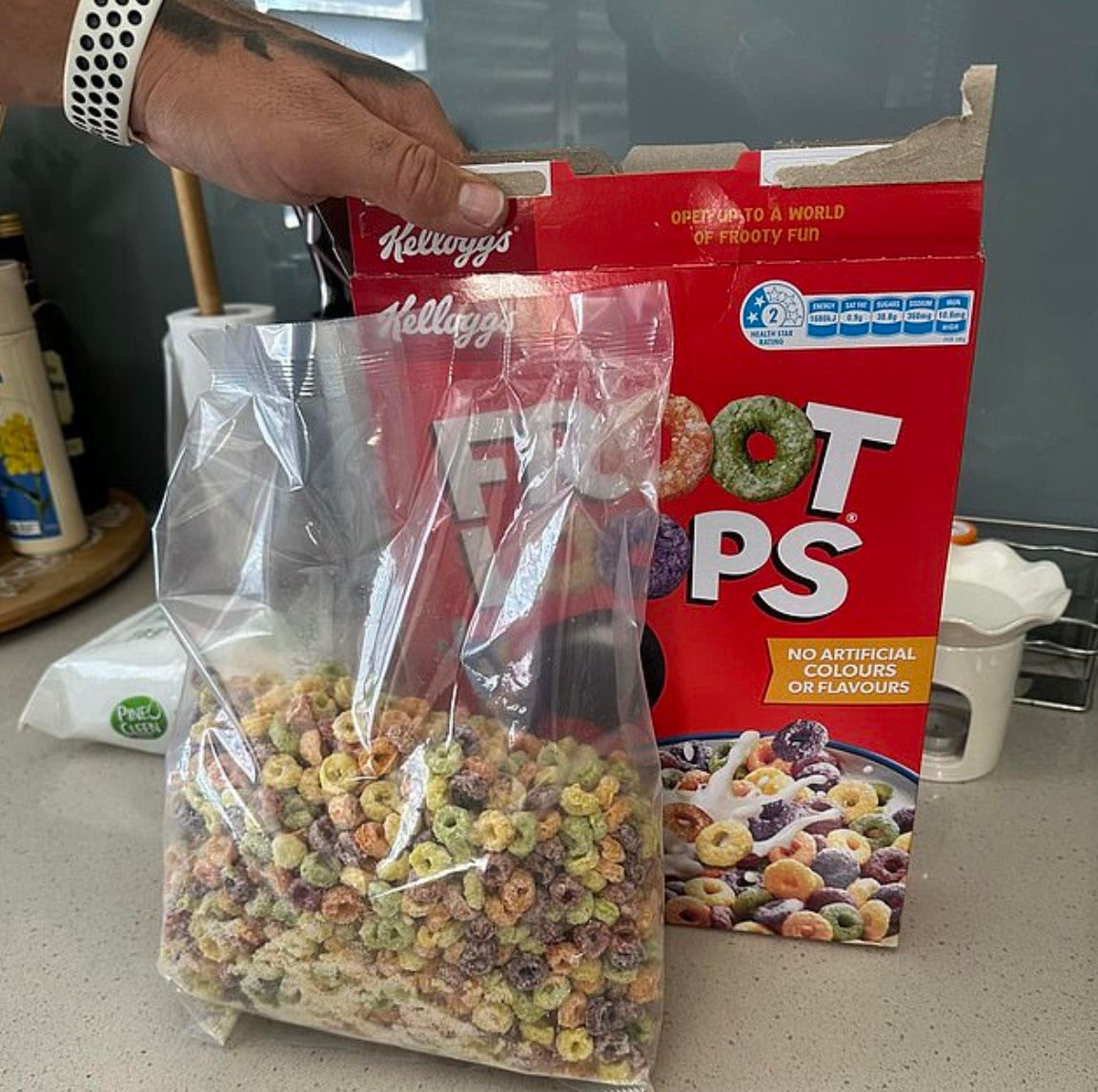A mother from Victoria, Australia, was shocked when she discovered that she had paid $10 for what she described as a “scanty” bag of Froot Loops. She expressed her frustration, stating that her children prefer Froot Loops for breakfast and are not willing to switch to other cereals.
After posting a picture of the half-filled bag on Facebook, Renee’s post received a lot of attention from other shoppers who could relate to her frustration. “Paying $10 for half a bag of Froot Loops is insane,” she wrote.

Renee admitted that she had learned her lesson and would only buy Froot Loops when they are on sale. “With my family of four, the box will barely last a week,” she added.
Many others shared Renee’s sentiments, expressing their disbelief at the high price of cereal. “I can’t understand how companies can justify charging $10 for cereal,” one person commented. Another concerned mother said, ”Everything is so expensive these days. It’s a rip-off.”
In response to the rising prices, one mother shared her strategy of buying cereals when they are on sale. ”They usually go on sale every six weeks, so I stock up for the next few weeks,” she explained.
However, not everyone understood why some people were hesitant to switch to cheaper, off-brand products. “The Aldi brand tastes the same and is cheaper and fuller,” one person suggested. Another added, “Aldi’s Chocopop is almost the same size as the box.”
A voice of reason chimed in, explaining the economic principle behind packaging. “The price is based on weight, not volume. The air in the bag protects the cereal from getting crushed. This applies to all products like this.”
As consumers navigate fluctuating prices and changing product sizes, strategic shopping habits and a willingness to try alternative brands may help manage household expenses.
In a time where every penny counts, people are becoming more conscious of their purchases and looking for value without compromising on quality. With the cost of living constantly increasing, finding affordable options remains a top priority for families trying to make ends meet.
Source: waterintakecalc.online


